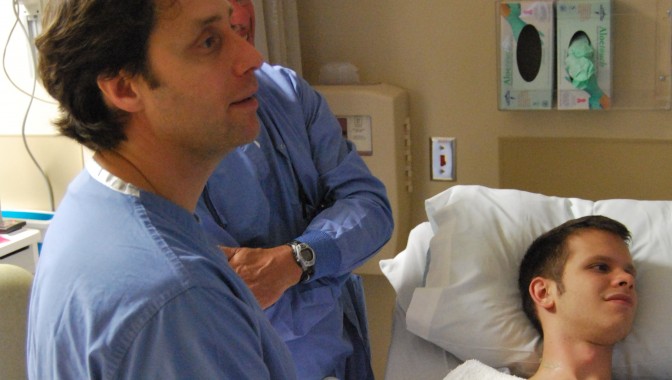Use a Bigger Needle
BIGGER NEEDLES
Many people lean toward smaller needles for single injection nerve blocks. I will usually use 21 or 22 gauge needles for an ultrasound-guided block if it is a single injection block that is superficial. There are advantages to using a heavier 17 to 19 gauge needles in other circumstances though. [nonmember]…
REGISTER for FREE to become a SUBSCRIBER or LOGIN HERE to see the full article!
[/nonmember]
One is that
[wlm_ismember]
the needle tip of a larger needle is usually bent (like a Tuohy) and is not as sharp. I will set aside the ‘sharpness’ issue for now, BUT a bent needle tip can be seen under ultrasound and used to identify the tip while advancing the needle. Granted, you can spend more on needles with higher visibility due to the etchings or irregular angles manufactured in the shaft while you are developing your skills, but especially when steep angles are not required, that isn’t necessary. If you can’t see an 18 gauge needle under ultrasound, you need more practice with your hands not shinier needles.
Larger needles can be seen easier under ultrasound and do not bend out of plane while being advanced. This is a bigger issue with longer needles that are necessary for deeper nerve blocks.
Finally, larger needles can be easily manipulated even when deep in tissue, or ‘Joy-Sticking’. This allows for a quicker and less painful redirecting of the needle when it is ‘just barely’ too high or too low as well as when it needs to be significantly redirected. With a smaller gauge needle, several back and forth movements may be required to get exactly where you want to be. A larger needle can just be ‘pushed’ up or down with little tissue maceration in comparison. If you are ever going to run into local anesthetic toxicity, this is going to be one of the biggest reasons for it (multiple passes leading to macerated tissue, that is!).
People talk about bigger needles being more painful to patients, but if the skin and surrounding tissues are localized adequately, this should not be an issue. Follow the link below to our new YouTube site to see the first of a series of four videos (with further comments) demonstrating these principles on a Phantom:
[/wlm_ismember]


